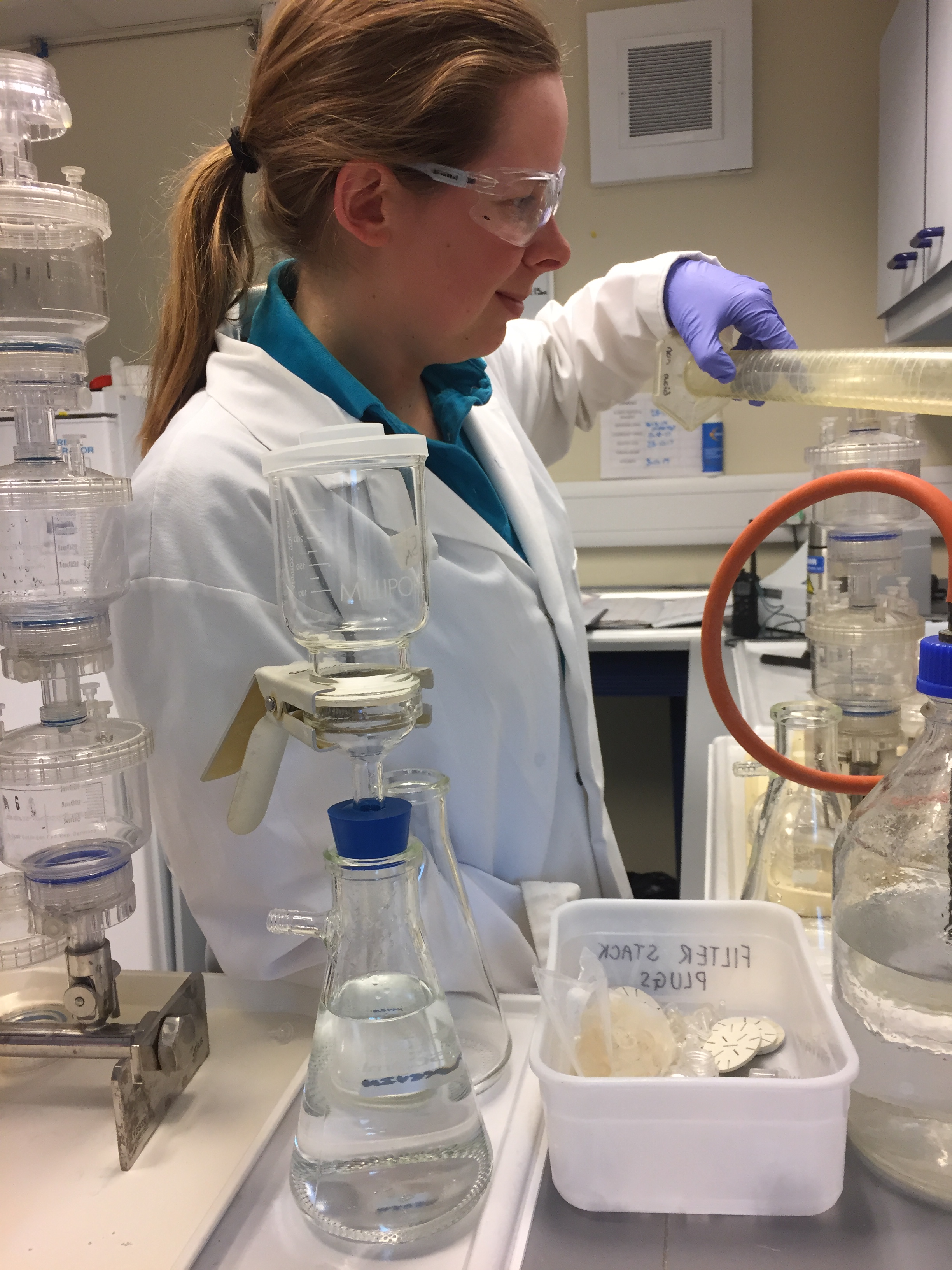Celebrate International Day of Women and Girls in Science 2018
11 February, 2018 Rothera
To celebrate International Day of Women and Girls in Science (11th February), Zoe Waring, the Marine Assistant at Rothera Research Station, has written a blog about her work at British Antarctic Survey and the journey which led her there.
What does being the Marine Assistant at Rothera involve?
As the Marine Assistant at Rothera Research Station, on the Antarctic Peninsula, my job is very diverse. My main role is collecting data for the Rothera oceanographic and biological Time Series, RaTS for short. This involves taking water samples which we then process in the Bonner Laboratory at Rothera and SCUBA diving to collect live specimens. I am just coming to the end of my first season which started back in December 2016, so I have spent a winter and two summers down in Antarctica. My time south will finish when I take a transport aquarium all the way from Rothera back to the UK on board the RRS Ernest Shackleton.
What is it like working in the Antarctic Winter?
It’s hard to talk about the average day in Antarctica as it is always different however, the most extreme days are in winter. During winter we have long hours of darkness, so most mornings I would walk across the yard to breakfast in the dark which is fine if the weather is good. But if the wind is blowing and there is snow in the air, it is a real challenge to walk in a straight line. After breakfast I would then brave the elements again, to make it down to the Bonner Laboratory. Once there I would sometimes have to dig my way down through the snow to get to the door. This ended up as a daily task at the end of winter when we had the most snow.
After gaining access to the lab I could start preparing to either go out water sampling or diving. One of the unique things about the RaTS is that it includes full winter-time ocean measurements. This means that when the ocean surface is completely frozen, instead of working from Rigid Inflatable Boats (RIBs) the sampling and diving occurs through holes cut into the sea ice. Collecting these winter measurements has enabled some of the most important new insights into the functioning of the oceanographic and biological systems to be obtained.
I always enjoyed going out and working in cold conditions during winter, it was an extra challenge. I loved watching layers of ice slowly build up on my clothes or watching the ice crystals form in the water.

How did I get here?
I’ve always loved spending time outdoors and learning about the natural world. This led me to studying Ocean Science at Plymouth University, which is where I first heard about becoming a Marine Assistant in Antarctica. I had seen the role advertised in my first year but wasn’t confident that I would get it. I enjoyed my course and I started volunteering for lots of different projects, everything from science cruises to local dive work. Before long I had all the skills that the advert was asking for so I went ahead and applied.
What is the best part about working in Antarctica?
Working at Rothera Research Station is a very unique experience, you can be doing your normal jobs of diving or lab work and then be asked to go on a co-pilot trip and end up flying around Antarctica for the day. On top of this, I feel very lucky to have lots of opportunities for skiing, climbing and mountaineering in the area surrounding Rothera.
Having a mixture of lots of work and days up on the hills makes the time fly by and I’ve found I haven’t missed much from back home. However, during winter we don’t get any new supplies so taking my first bite out of a crisp fresh apple at the start of summer was amazing!